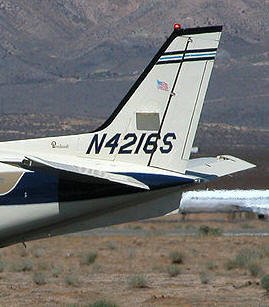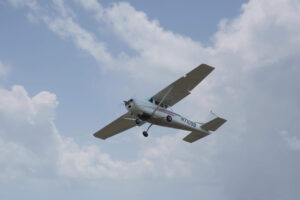Instrument Flight Rules (IFR) are crucial for maintaining the safety and efficiency of air traffic, particularly in poor weather conditions or high-traffic airspace. Pilots operating under IFR must adhere to specific reporting requirements to ensure smooth communication with Air Traffic Control (ATC) and to maintain situational awareness. Remembering these reporting points can be challenging, but the MARVELOUS VFR C500 acronym simplifies this task. This guide breaks down each component of the acronym, providing a clear understanding of mandatory IFR reporting points and their significance.
Understanding MARVELOUS VFR C500
The acronym MARVELOUS VFR C500 helps pilots recall the mandatory IFR reporting points:
- M – Missed approach
- A – Airspeed changes more than 10 knots or 5 percent
- R – Reaching a holding fix
- V – VFR-on-top altitude changes
- E – ETA change more than 3 minutes (no radar)
- L – Leaving a holding fix
- O – Outer marker inbound (no radar)
- U – Unforecast weather
- S – Safety of flight issues
- V – Vacating an altitude
- F – Final approach fix inbound (no radar)
- R – Radio or nav failures
- C – Compulsory reporting points (no radar)
- 500 – Unable to maintain 500 FPM climb or descent
Breakdown of Each Reporting Point
M – Missed Approach Reporting a missed approach is essential for ATC to provide further instructions and ensure other aircraft are aware of your position. This helps prevent potential conflicts and allows ATC to adjust your flight plan accordingly.
A – Airspeed Changes Significant changes in airspeed (more than 10 knots or 5 percent) must be reported to ATC. This information is crucial for maintaining separation between aircraft and ensuring safe and efficient traffic flow.
R – Reaching a Holding Fix Upon reaching a holding fix, pilots must report their position to ATC. This allows controllers to manage airspace more effectively and ensure that holding patterns are safely maintained.
V – VFR-on-Top Altitude Changes When flying VFR-on-top, any changes in altitude need to be communicated to ATC. This reporting ensures that other aircraft remain aware of your position and helps prevent potential conflicts.
E – ETA Change More Than 3 Minutes (No Radar) In non-radar environments, if your estimated time of arrival (ETA) changes by more than three minutes, it must be reported. This helps ATC manage traffic and provide timely information to other aircraft.
L – Leaving a Holding Fix Reporting when you leave a holding fix is critical for ATC to update your flight plan and provide further instructions. This helps maintain orderly traffic flow and prevents misunderstandings.
O – Outer Marker Inbound (No Radar) In non-radar environments, reporting when you are inbound at the outer marker ensures that ATC can track your approach and provide necessary guidance.
U – Unforecast Weather Encountering unforecast weather should be reported immediately. This information helps ATC and other pilots adjust their plans and enhances overall safety.
S – Safety of Flight Issues Any issues that affect the safety of your flight must be reported to ATC. This includes mechanical problems, medical emergencies, or other critical situations that require immediate attention.
V – Vacating an Altitude When you vacate an assigned altitude, it’s essential to inform ATC. This allows controllers to update traffic information and maintain safe separation between aircraft.
F – Final Approach Fix Inbound (No Radar) Reporting at the final approach fix in non-radar environments helps ATC track your progress and provide necessary instructions for landing.
R – Radio or Nav Failures If you experience radio or navigation equipment failures, you must report these to ATC. This ensures that alternative communication and navigation methods can be coordinated.
C – Compulsory Reporting Points (No Radar) In non-radar environments, reporting at compulsory points helps ATC maintain situational awareness and manage traffic effectively.
500 FPM Climb or Descent Unable If you are unable to maintain a climb or descent rate of 500 feet per minute, this must be reported. This information helps ATC adjust your flight profile and provide necessary instructions to ensure safety.
Practical Tips for Pilots
Using the MARVELOUS VFR C500 acronym in real-world scenarios can enhance your IFR operations. Here are some tips:
- Practice Regularly: Familiarize yourself with the acronym during pre-flight preparations.
- Stay Organized: Keep a quick reference guide in the cockpit.
- Communicate Clearly: Always ensure your reports are clear and concise.
- Plan Ahead: Anticipate reporting points and prepare your communications in advance.
Conclusion
Mandatory IFR reporting is a critical aspect of safe flight operations. By using the MARVELOUS VFR C500 acronym, pilots can ensure they never miss an important report, enhancing both their safety and that of others in the sky. Continuous learning and adherence to best practices are vital for all aviators.
FAQs
Q1: What should I do if I miss a mandatory report? If you miss a mandatory report, contact ATC as soon as possible and provide the necessary information.
Q2: How can I remember all the reporting points? Using acronyms like MARVELOUS VFR C500 and practicing regularly can help you remember the reporting points.
Q3: Are there any tools to help with IFR reporting? Yes, many flight planning apps and cockpit reference cards are available to help pilots with IFR reporting.




